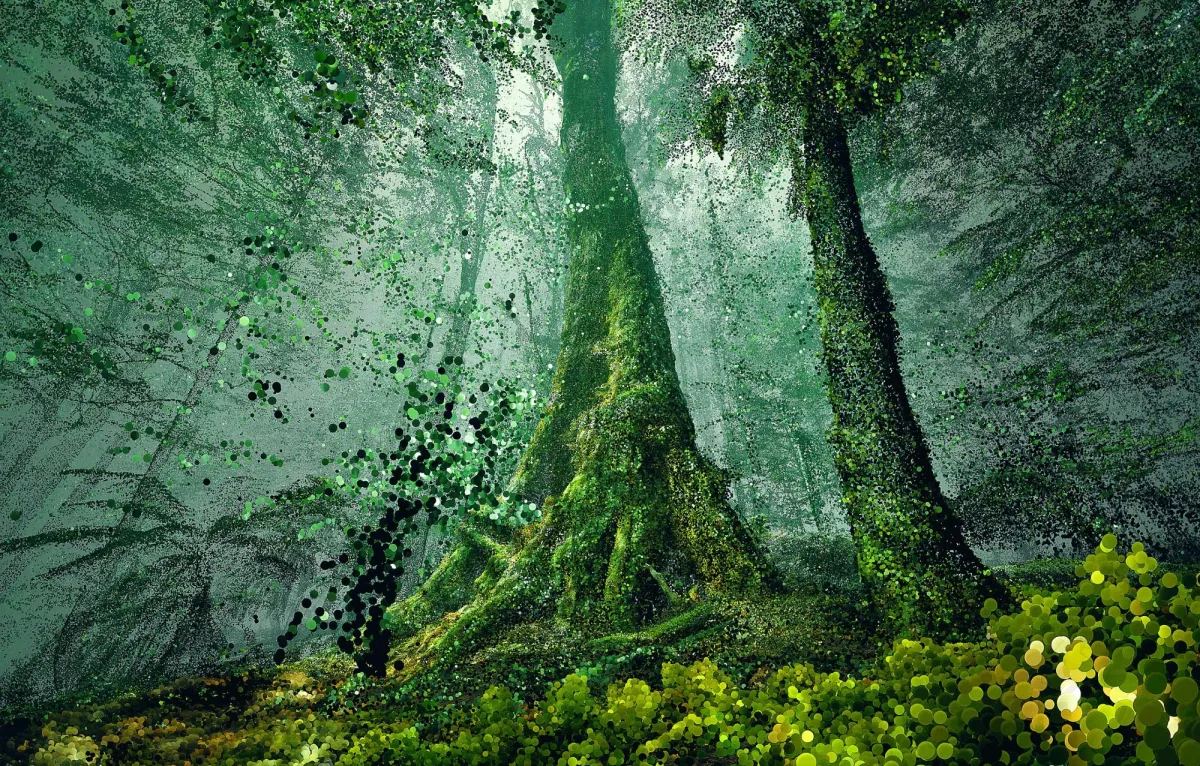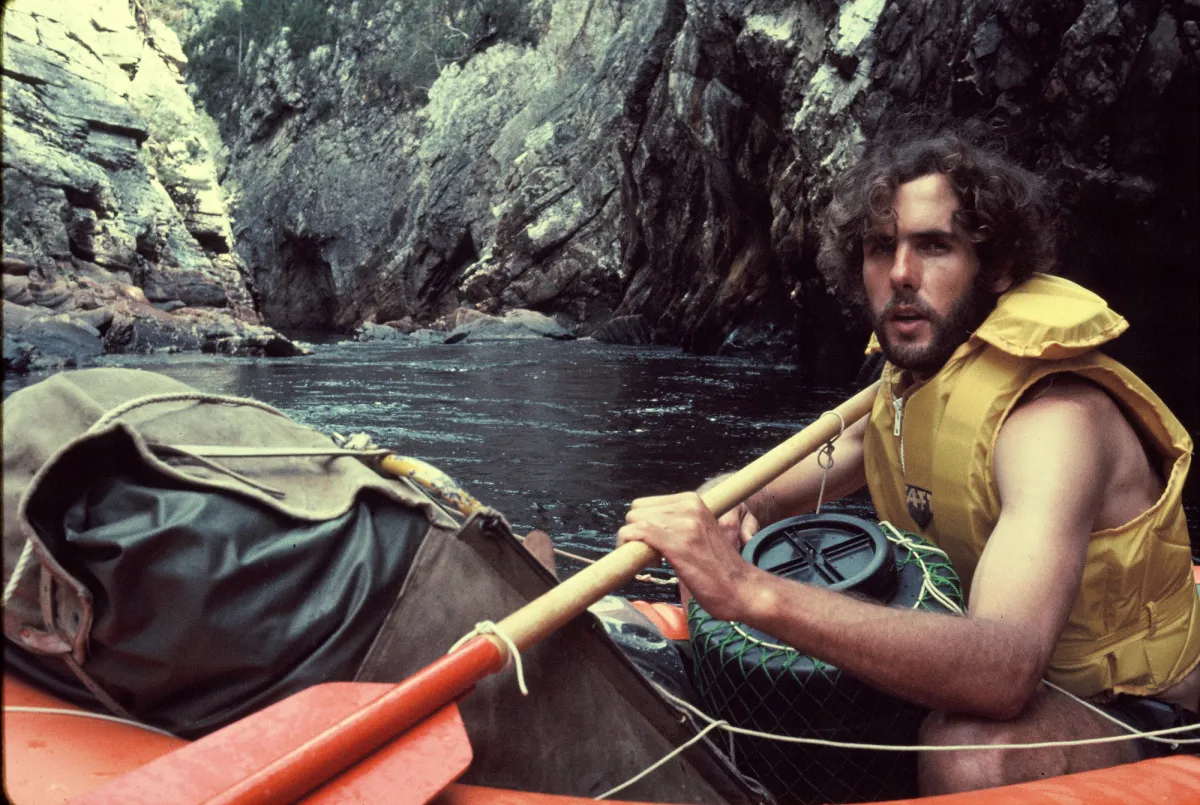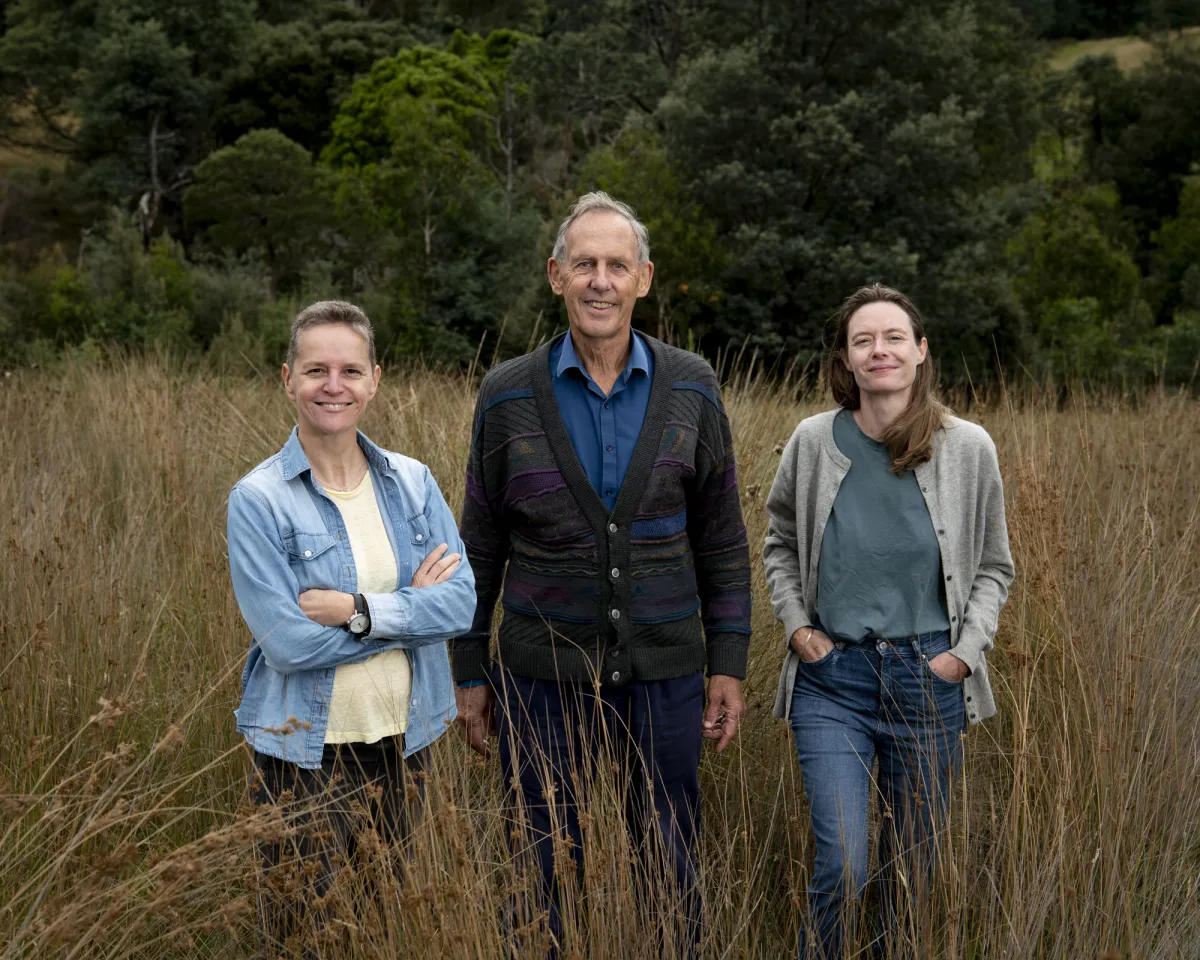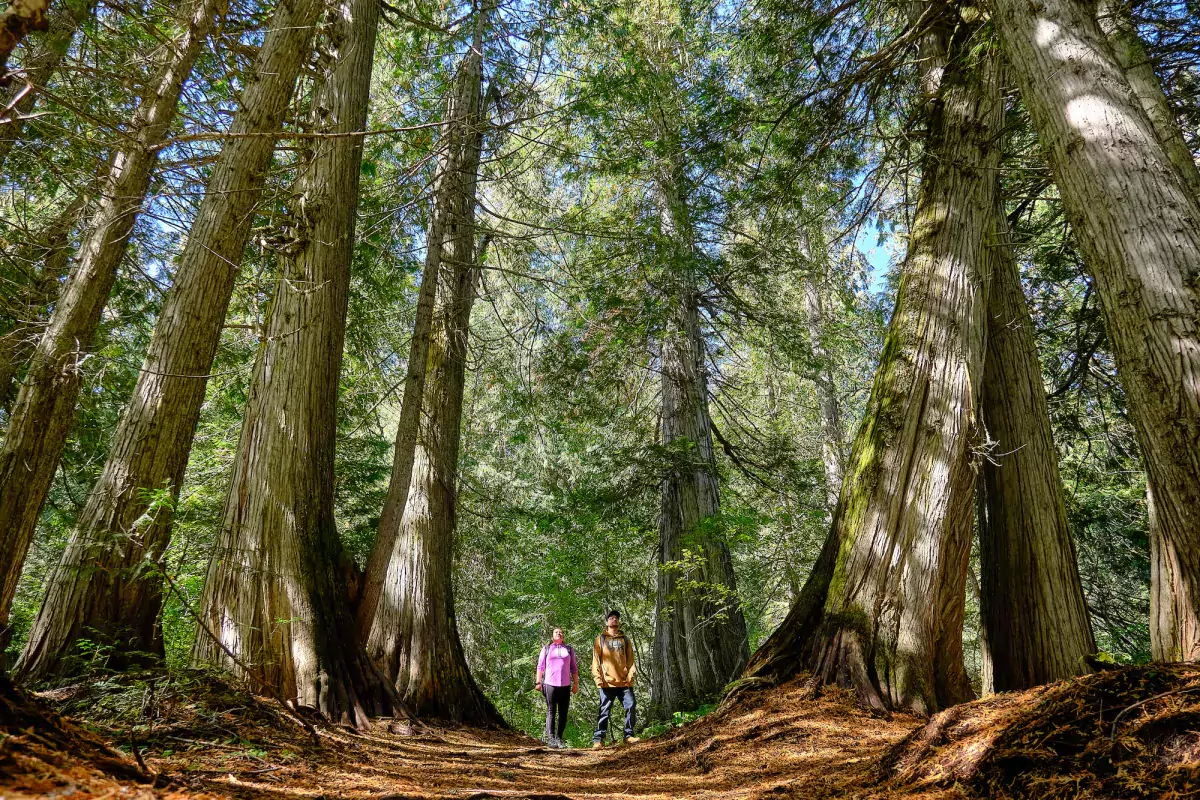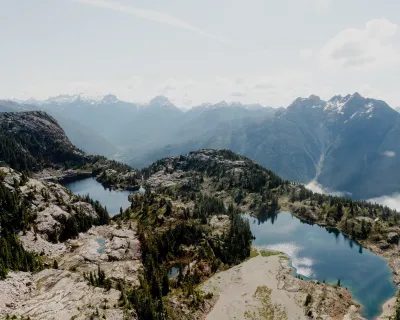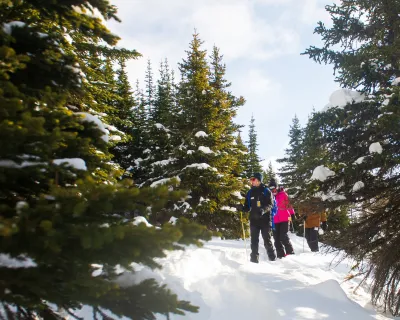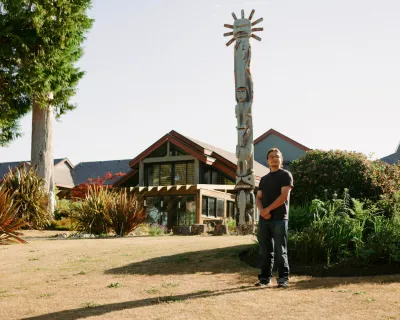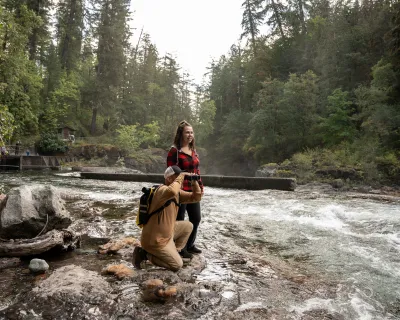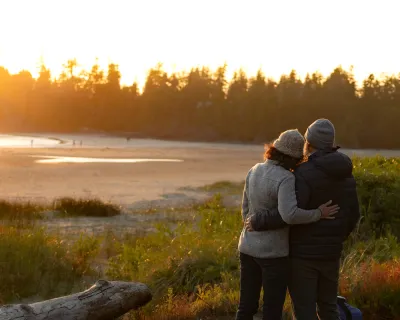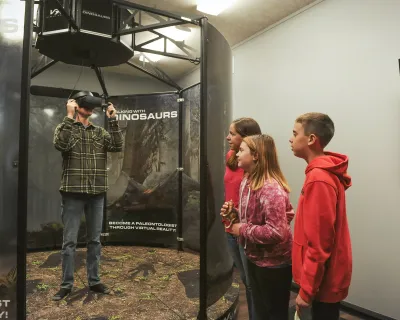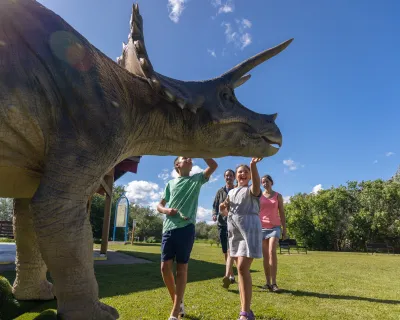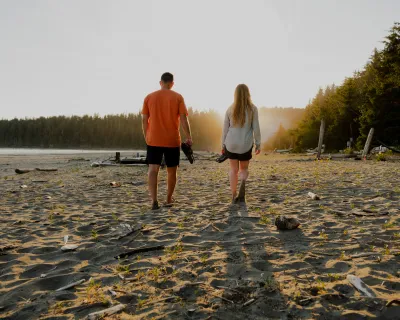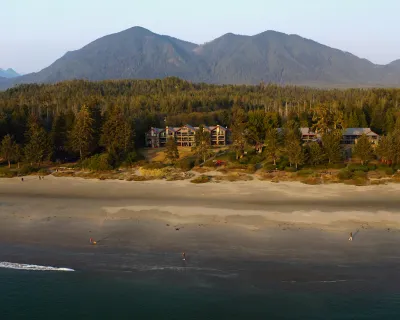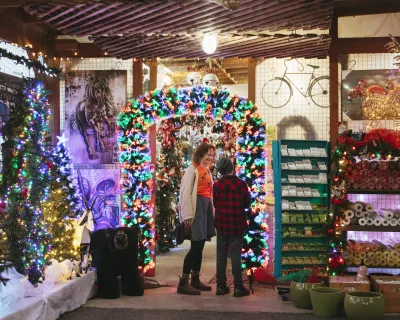How forests might save us: through the eyes of The Giants
Imagine a world without rainforests. Or grizzly bears. In the aftermath of two back-to-back, traumatic wildfire seasons, it would be easy to get discouraged about the fate of Western Canada's (and the world's) forests. As the battle over carbon reduction continues and the UN's COP summits struggle to show progress, it may be tempting to give up and accept the "inevitable."
But all is not lost. The Giants, a new film out of Australia—where they have some experience with wildfire devastation—is bringing a message of hope and spurring renewed efforts to protect our environment, worldwide. The film recently premiered in Canada at the Banff Mountain Festival, and is both touring and available for streaming now (read on for details).
From loss to action
"Canada is dealing with some of the same issues we are, because we have some of the last great forests," says filmmaker Laurence Billiet. Billiet and filmmaking partner Rachael Antony had a similar experience to Albertans and British Columbians, after the devastating Australia wildfires in 2019-20.
Think grizzly bears couldn't be threatened with extinction? Wildfires and subsequent logging have driven koala bears to the brink in Australia.
"We lost about 25 percent of our forests in our national parks, countless animals… it was really horrific," recalls Billiet. "We were losing so much of our biodiversity, we had these amazing forests and we didn't seem to be valuing them enough."
"Are we caring for them, or are we clear-cutting them for toilet paper?"
"Soon after the fires, Australia started garbage logging, which removes more habitat because an animal might be able to live in a dead tree, but not on the ground."
But instead of succumbing to depression or eco-anxiety, the pair decided to shift focus, from mourning what was lost to saving what remained.
Meet the giants
When you witness the majestic beauty of ancient trees, like the giant cedars on Tla-o-qui-aht homelands on Meares Island in BC or Australia's Eucalyptus Regnans, Huon Pine or Myrtle Beech tree, it's hard to imagine ever wanting to cut one down for lumber or toilet paper.
In casting the latter three trees as the stars of their new documentary, The Giants, the two filmmakers took a radical approach. They spent days filming the life around and within them, using 3D laser scans (the same ones used in forestry) to see both inside and out.
"We spent three days with each tree, and we scanned them-creating an animated landscape based on the data… creating really beautiful immersive landscapes so that you can see the richness of these forest habitats," Rachael explains.
"Because when you just look at them, it appears not much is going on … and as people we are grounded on the forest floor. So that really elevated the visual impact."
Get outdoors, get more connected, get more Zen.
Sign up for ZenSeekers enews for more transformative travel inspiration.
By looking at the beauty and resonance of some of the earth's most ancient citizens, the film is designed to inspire a new love for forests. And through that, spur action to preserve them.
"We thought, let's make something about trees, about the ecosystem, but let's make it beautiful and unfamiliar, and make people want to think again, look again… and find some similarities between human life and tree life."
Saving forests helps save humans
There is a human star of the film, too, Dr. Bob Brown. Like the flora in the movie's cast, Brown is a major influence on the ecosystem around him. But his role is conservation in Australia (like Australia's David Suzuki, who has an interview in the film).
Next to the film's cast of flora, Brown is portrayed as an example of how any one person can make change.
Of course, he isn't alone; and the filmmakers are sure to show that Brown is one tree within a forest. But like those giants, his 50 years in conservation have given him an elder status within Australian conservation.
"He's worked his whole life saving these forests. So we wanted to intertwine those stories and how a person grows from an infant to an elder, and from a seedling to a forest giant."
Brown's is a message of optimism, both for what can be accomplished through singular effort and when a community is galvanized around a cause. For him, working to save watersheds, forests and natural landscapes has been an enriching experience that, rather than despair, has brought a lifetime of joy.
The knock-on effect
"Meeting and working with Bob Brown was very inspiring," says Rachael. "Everyone can do something, you don't have to attach yourself to a tree.
"In Australia, in response to the film, a lot of people just went and spent time in the forest. Because if you live in a city, you don't see them regularly. And it can be quite life-changing."
"Some of those trees are over 4000 years old, and when you stand at the bottom of those trees, you can really feel it."
(Spending time in Western Canada's forests has the same enriching effect, as many of our Zen audience know. Some of the most ancient, protected gardens are found on the West Coast of Canada, on #indigenouscoastbc homelands, perfect for a rejuvenating visit any time of year.)
For Laurence and Rachael, the film has transformed their approach to environmentalism as well.
"It's easy to feel despair… but don't get depressed, get active. [Dr. Brown's] life story is that he was depressed as a young man and getting involved actually helped him find happiness," explains Laurence.
"When you get involved, you build a network that really supports you as well, something that's really life building and enhancing."
In turn, that has led to transformation for the two filmmakers as well, as they increased their own activism in response to what they learned, attending rallies and taking their advocacy to higher levels of government.
Rachael says, "We were feeling kind of hopeless… but then we made this film … and while we haven't solved the problem, we've helped to put it on the agenda."
For Western Canada, the reckoning is here and The Giants is a message that may help show a path forward. As Canada debates how to move forward with forest management, complacency is not an option.
As Rachael Antony says, "When it comes to climate, forests are the easiest part of the equation because all you need to do is keep them."
Get inspired, support forest conservation
Where to watch see The Giants on tour or via streaming
How to take action
Support Trees Canada in its mission to plan and nurture trees across Canada.
Help protect Canada's wetlands with Ducks Unlimited.
Find inspiration for more environmental action with tips from The Giants.
More about trees
The Hidden Life of Trees, Peter Wohlleben
Finding the Mother Tree, Suzanne Simard
Or read more about conservation, and reconnecting to forests, here in Western Canada.
Like Our Facebook Page


